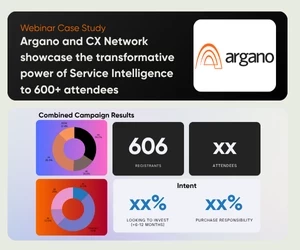How and Why UK Supermarkets Need to Make a Shift to Better Customer Experience
Add bookmarkA case study on the UK supermarket industry and where relative newcomers Aldi and Lidl are getting customer experience right.
Supermarkets need to make the shift to having a better customer experience immediately. There has always been tremendous competitiveness in the supermarket space and with the arrival of discount stores such as Aldi and Lidl the marketplace has been widely shaken up. Big brands like Asda, Sainsbury’s and Morrisons are investing huge amounts of money into price-cutting effectively and the theory is that bringing down the price will attract the customer.
Key Strategies for Supermarkets
In the supermarket space there is a very clear formula for attracting customers: price, location, and convenience; they are the three big motivators that get somebody into a store. If you put those motivators to one side and assume that your company is doing as good a job as everybody else then it is important that softer factors – the environment of the store and the pace at which customers can move through it – are continuously improving.
Aldi and Lidl are having a huge effect on supermarkets right now, open any newspaper and it is apparent; they are a fresh, new alternative that customers are turning to. There is a really big focus on price but there is also a focus on quality. Aldi and Lidl are very honest and open about the set-up of the branch, they do not pretend to be unaware of the fact that they are fairly staffing-tight and they are clear with the customer that it is part of the reason they can continue to offer such great prices. In terms of dealing with basics and what customers are expecting those two brands are doing a tremendous job at challenging the more conventional brands to think about where they need to be.
What makes a difference to the customer experience is how the supermarket employee engages with the supermarket customer. Little things from identifying where something is for a customer, helping the customer find something, giving more information about what is in products and generally being knowledgeable about the brand, are all ways that are easy to improve the customer experience and are increasingly expected from consumers.
If it is not easy for a customer to engage with a supermarket, for example if the parking is not right, the click-and-collect facility is not right, or if it is too complicated to go through the self-checkout tills because they are always giving you a message about an ‘unwanted item in the bagging area’, then customers will put up with that for a while because price and convenience issues are really important to them. However, over a period of time they will get fed up with it and they will change to brand that understand the basics and carries them out well.
[inlinead]
Main Obstacles
It can be very hard for supermarkets to make the shift to having a customer-centric business strategy. For many years the main focus has been on price and cutting costs – generally what that means is reducing shop-floor coverage and management in a bid to: firstly, be better on cost and secondly, pass the theory of cost saving on to the customer. The issue with that is, if a supermarket continuously focuses on short-term cost saving strategies and does so by lowering the numbers of staff, customers notice and begin to think they are missing out on other things that they should be getting as a customer. There is a very fine line between cost-saving to positively impact the customer and cost-saving for better margins on your bottom line.
Customers talk a lot about the fact that they do not get as much interaction with staff as they would like, that they are unable to find knowledgeable staff and they now have to wait longer at checkouts. Your store might offer an alternative with self-service checkouts but for many customers that is not something they want to do. Therefore, there is a misalignment between what supermarkets have been striving for over the last decade and what customers really need and want. Change is hard but in order to achieve a connected customer experience, supermarkets have to listen to the customer and they need to listen to their own people who are at the sharp end on the shop floor.
The notion of listening is very important because a lot of supermarkets get it wrong. Listening is not just collecting data from the feedback sessions brands have with staff, or the focus groups with customers, what it really boils down to is actually hearing what the customer is asking for and being susceptible to change. Normally, if customers ask for an initiative that is not in the supermarket’s plan it is quite often forgotten about, not promoted or not given the priority it should have.
See also:6 Unmissable Tools to Put The Customer at the Heart of Your Strategy
How Can Supermarkets Make This Shift?
Supermarkets have always been very focused on price, and they cannot do much about location because they are already in fixed points. About ten years ago there was a big move towards large hypermarket-type locations where customers would go in and not only be able to buy their weekly food but be able to buy TVs too. Recently, there’s been a big change in that, the customer is doing a lot more research online, they do not necessarily want to go to a large hypermarket to buy their television, they might well do it from somewhere else, be that online or through an app. The world around them is changing and there are a lot of chief executives of supermarkets stating that it has never been tougher.
In order for supermarkets to win through customer experience there are basics that need to be gotten right 100 per cent of the time, not 90 per cent of the time. Supermarkets need to decide, apart from price, what other performance factors might be, whether that be how well they are engaging with people on the shop floor, what the customer is expecting them to do or what they are actually delivering against. Standards are always changing and the customer’s expectations are always going up.
For those supermarkets that are beginning to hear, they are really starting to understand what they need to do to win back customers. Recently, a very large supermarket has started to implement these changes and in the case of the brand, they are performing well compared to their competitors on the high street.
When we discuss what the impact of having a better customer experience will be for supermarkets, the answer is really simple: they will keep more customers longer. With the explosion of loyalty mechanisms, there has been a lot of talk about loyalty in supermarkets.
Loyalty mechanisms are about price discounting but there will probably always be a group of customers who will be quite fickle and move around. Increasingly, there are a set of customers who might have always shopped at one particular brand but now may shop at two or three brands depending on convenience and where they are located. Even with that aspect of things, customers still talk about the fact that they want to be loyal to a brand, they often will talk about their supermarket.
Conclusion
It actually takes quite a lot of negative experiences for a customer to really stop going to a particular supermarket, but in order to capitalise on the customers that come to your store, supermarkets really must strive to provide the best customer experience possible.






















